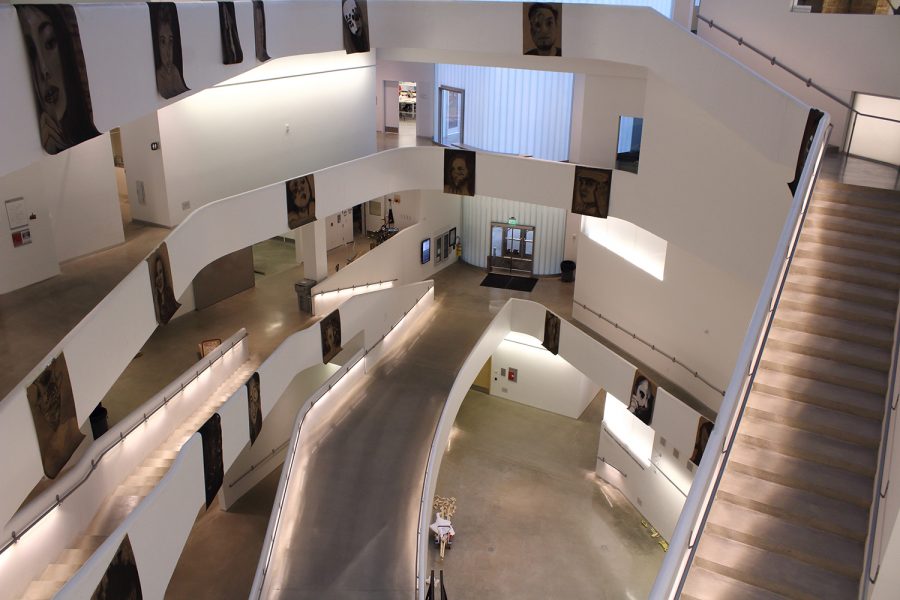Banerjee: Inaccessibility of art majors turns away prospective artists
Unless the university can improve its institutional support for art majors and students, the arts can remain very inaccessible for financially disadvantaged students.
The interior of the Visual Arts Building on the west side of campus as seen on Tuesday, Oct. 10, 2017.
April 24, 2019
The art community at the University of Iowa has a vibrant scene, with strong programs in graphic design, intermedia, printmaking, and other studio arts. But it can be intimidating to enter it without the appropriate financial means. Accessibility in the arts is at times a difficult subject. Being able to pursue arts in higher education is often a bigger roadblock than a leg up. We need to be doing more to support programs and aid for artists, especially artists in universities who are trying to build careers.
The education itself is expensive. At the UI, going to school full-time, or even part-time, can be financially prohibitive for some students. But even outside the cost of enrollment, course fees coupled with the cost of supplies can be unreasonable. Introductory drawing classes, such as Basic Drawing, can involve costs nearing $100. Accessibility through financial aid may be possible, but for students who cannot apply money toward those costs, or not enough money, it can be a burdensome expense.
RELATED: Neal: Are casting calls an act of generosity, or exploitive labor?
Understandably, the price of materials is a legitimate concern on the university’s end as well as the students’. For the Elements of Jewelry and Metal Arts course offered this coming fall, the fee per course is listed at $120, with additional costs “typically [varying] from $10 to $50 depending on the student’s material preferences and scale of work.” Putting on a course such as this is most likely expensive for the university, which faces facility costs and materials costs, but for some students who are genuinely interested in metalwork, a $170 price tag is impossible.
Navigating the possibilities for financial aid and scholarships for art students is certainly part of the solution, but even then, students with genuine need and interest may still face problems financing their studies. Because of this, a lot of the artists I know are not in school but rather pursuing their fields on their own while working full- or part-time. While costs of materials are still applicable, at least there is no worry of thousands of dollars of student debt. This seems to be the reality for a lot of visual artists and even some writers who see that they could achieve more on their own terms without having to be saddled with exorbitant costs.
RELATED: Brings Plenty: Watching a band you like become popular
The art scene does not really live within the university, but that doesn’t mean universities such as the UI cannot work to cultivate an art community that is accessible to anyone. Many people do not major in or pursue artistic interests for fear of not being able to support themselves alongside the debt they accrue.
Programs and scholarships that support artists need to be made more accessible and better circulated; on the UI Scholarship Portal, searching for scholarships directly related to artists or art majors leads to no results. Trying to find other programs internally led to similar results. While there are support structures present for student artists, not enough of them are from the institution that supposedly is there to help them.
RELATED: Inside and out: World-renowned sculptor and alum returns to UI campus
The university does a good job of offering a range of art classes and programs, many of which are incredibly renowned, but the question remains of whether or not they’re letting their students down. There should be more for artists in college to fall back on so they can support themselves and afford supplies to an expensive major while still in school.






